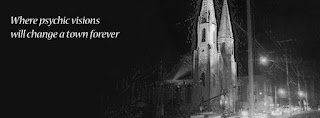The popular Esplanade Park, fondly referred to as “Espa” among locals, is the most famous park in Finland and the green heart of Helsinki. People come here to see and be seen, to listen to music and watch performances, and to enjoy picnics. Originally, the principle architect of Helsinki Carl Ludvig Engel designed the park in an area of low-lying wetland. Locals referred the eastern portion (Chapel Esplanade) to as “Small Calf Hook” and the central and western portions (Runeberg Esplanade and Theatre Esplanade) as “Large Calf Hook”. The foul smelling Kluuvi Bay (Kluuvinlahti) extended southwards almost to the Esplanade, so the authorities required a lot of landfill to construct the park in the 1850s.
 |
| The Esplanade Park |
The park features an architectonic style with its straight tree-lined alleys and flowerbeds. The rows of linden trees on either side of the park create a hall-like space. Svante Olsson (1856–1941), Helsinki’s first City Gardener, also influenced in the design of the park. Furthermore, landscape architect Leena Iisakkila designed the most recent renovation in 1998.
One of the most historic restaurants in Helsinki is the Chapel Esplanade. Kappeli was designed by architect Hampus Dahlström (1829–1882) and built in 1867. According to a legend, the name of the restaurant originally referred to a booth from which a local “shepherd” boy (“pastor” in Latin) used to sell milk and which was affectionately known as “The Chapel”. This was followed by another “chapel” in the shape of a lofty building used by the confectioner Jerngren to sell pastries and lemonade in the 1840s. It seemed natural, therefore, to christen the new restaurant Kappeli. A public toilet can be found at one end of the restaurant.
 |
| The Chapel Esplanade |
On either side of the stage there is a pool with interesting sculptures commissioned from Viktor Jansson (1886–1958) in 1939 and unveiled in 1942. Water Nymphs depicts a mermaid and child playing with a fish; the mermaid was modeled on the sculptor’s daughter Tove Jansson (1914–2001), world-famous creator of the Moomins. Hey There (Hi) depicts a small boy playing with a fish.
 |
| Advertisement |
The open-air café next to the stage is open in summertime and also sells tickets for sightseeing tours departing from Fabianinkatu next to the park. In the center section of Esplanade Park, roses blossom among the trimmed cotoneaster shrubs. As you get close to the statue of J. L. Runeberg in early June, you will be able to notice the beautiful flowering crab apple trees (Malus Nipissing) on the northern side of the park. The statue is circled by columnar aspen trees, and laburnum bushes with exotic golden flower clusters also growing on the lawns.
 |
| The Pool with a Water Nymph |
The statue of Johan Ludvig Runeberg was the first public monument erected in Helsinki. The unveiling occurred on May 6th., 1885, exactly eight years after the death of the poet, and turned a major event attended by the cream of society plus 20,000 other patriotic Finns. The memorial committee was appointed by the Estates and headed by the author Zacharias Topelius (1818–1898). Local residents lit candles in the windows as a sign of patriotism, beginning a tradition that continues to this day on Independence Day (6 December).
 |
| Johan Ludvig Runeberg Memorial |
Runeberg Esplanade also contains the park’s four historic kiosks. The decorative wooden kiosks on the southern side were built in 1893 and 1909, while the functionalist kiosks on the northern side were designed in 1928 by City Architect Gunnar Taucher (1886–1941).
 |
| Close-up of a Wooden Kiosk |
The western section of the park is dominated by the restaurant Teatteri and Svenska Teatern (the Swedish Theater, familiarly known as “Svenska”). The theater was designed by Professor Nikolai Benois (1813–1898), the court architect of Tsar Nicholas I, and completed in autumn 1866. The building was modernized and expanded in 1935–1936 under the direction of the architects Eero Saarinen (1910–1961) and Jarl Eklund (1876–1962). The architects left the heart of the theater, the original beautiful red and gold auditorium, almost untouched. The most recent renovation was completed in 2012.
 |
| Fact and Fable Statue |
Two memorials can be found in Theater Esplanade. The first is to the author, journalist and historian Zacharias Topelius (1818–1898), the man behind the memorial to his friend Johan Ludvig Runeberg. When the memorial project began in the 1920s, the trend favored symbolism over exact likenesses. The design competition organized in 1928 by the Society of Swedish Literature (Svenska Litteratursällskapet) was one by the sculptor Gunnar Finne (1886–1952). Fact and Fable was unveiled in 1932, 34 years after the death of Topelius.
 |
| Eino Leino Memorial Statue |
In 1999 the first “Helsinki model” City-WC was opened in Theater Esplanade. The public toilet was designed by the architect Juhani Vainio from the Public Works Department of the City of Helsinki and manufactured in Sweden. The toilet has two parts: a larger pay section with a toilet, sink and changing table for babies that is accessible also by wheelchairs, and a free-of-charge pissoir that was later converted for use also by women. The City-WC is cleaned once a day.
|
|


No comments:
Post a Comment